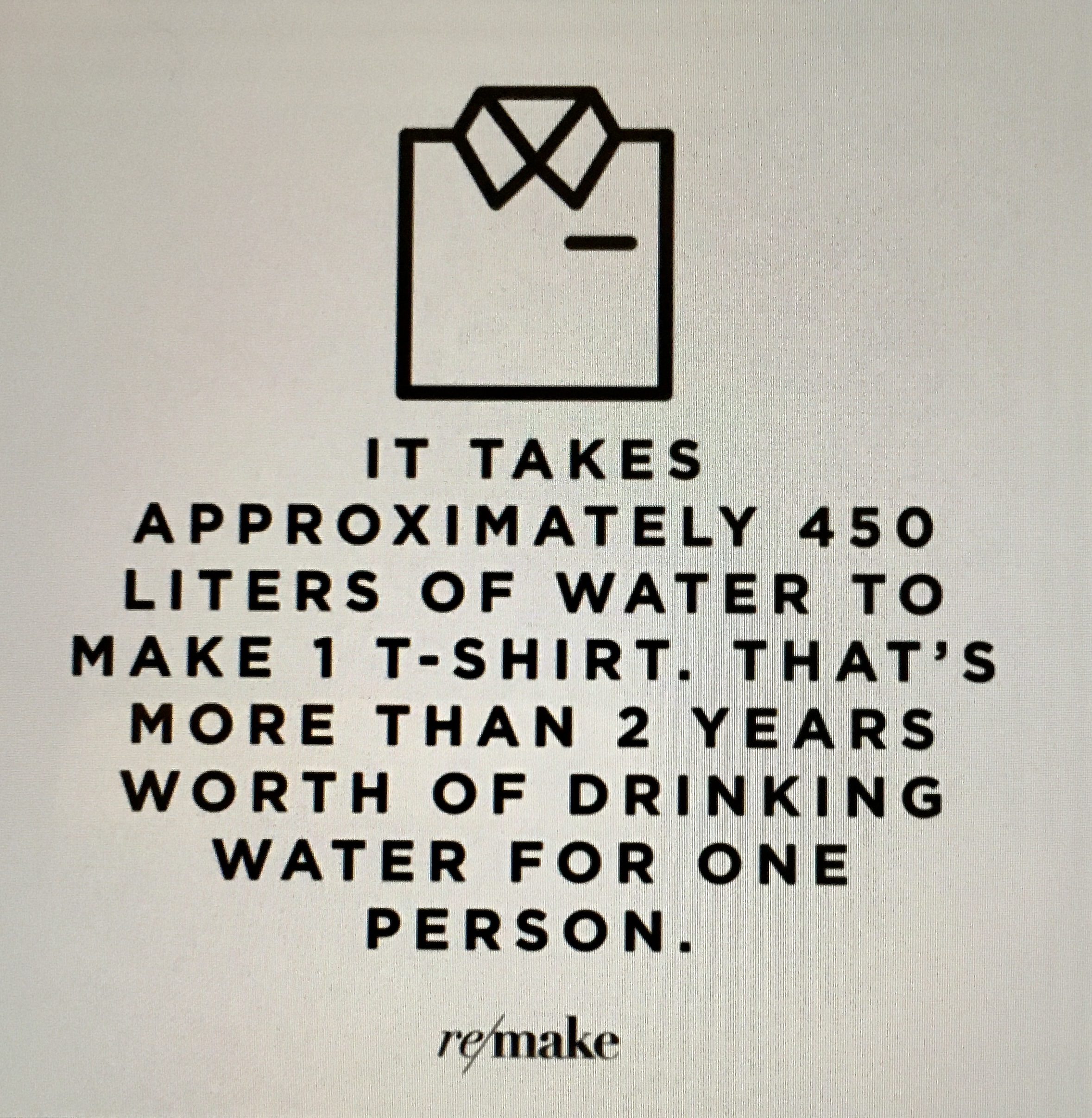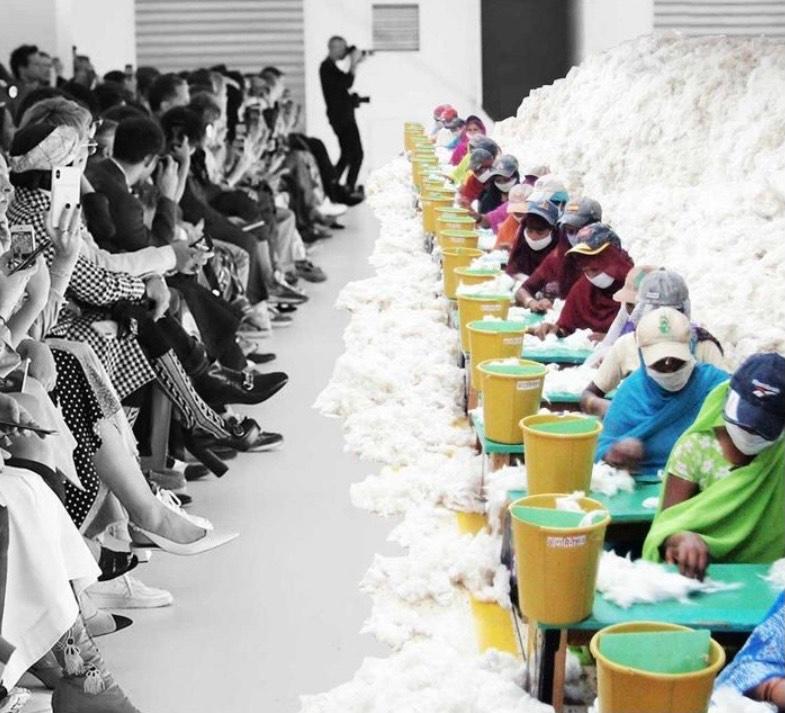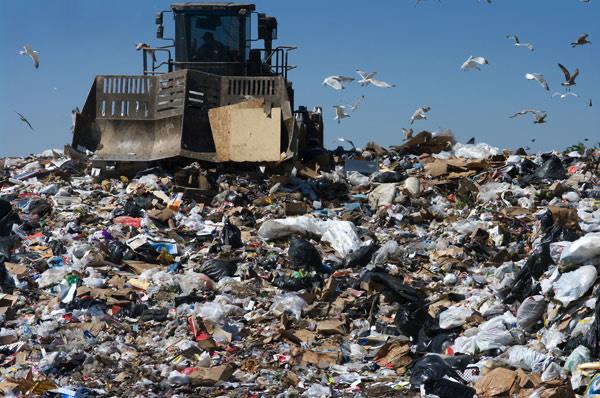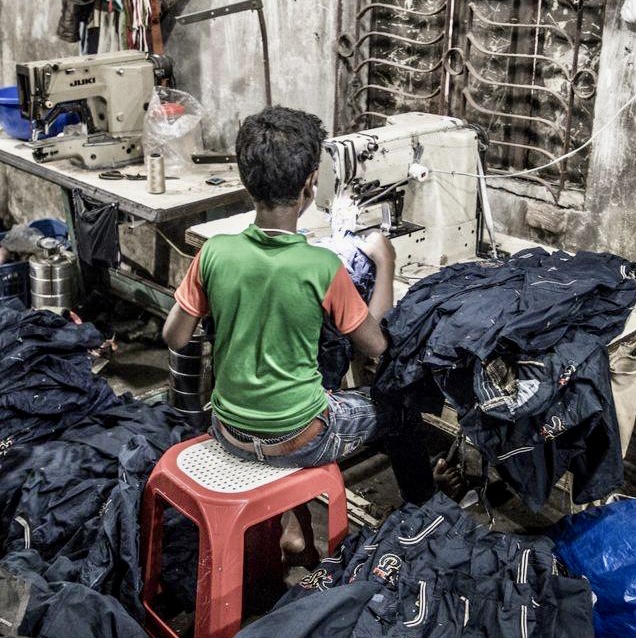By Shoda Khan
The term “fast fashion” describes a marketing method used to produce many items of clothing in a short period of time, items which because of manufacturing short cuts, also tend not to last very long. Companies quickly replicate cheap versions of catwalk and high fashion designs, then bring these low-priced styles to the public. Many fast fashion brands are very well known, like Zara, H&M, Gap, Forever 21 etc., and are famous examples of rapidly growing businesses.
It sure sounds like a good deal: being able to buy high fashion designer clothes at a low cost. But are you aware of the systemic problems within fast fashion?
Fast fashion is bad for the environment.
Fast fashion manufacturing is one of the most water-consuming industries in the world. According to EcoWatch [www.ecowatch.com] : “It is estimated that 70% of rivers and lakes are contaminated by the 2.5 billion gallons of waste water produced by the textile industry.” There’s a lot of chemical waste from the making of these products that is going back into our oceans, thereby harming our environment. The waste water created by these chemicals can be very dangerous for everything that lives in the area around it. There are many places in the world that suffer from water shortages even while these industries are constantly contaminating and wasting water.

The excessive use of water isn’t the only thing causing harm. These industries are also producing an excessive amount of disposable clothing. Due to how affordable the clothing is, consumers are constantly asking for more, which further brings down the value.
According to Ngan Le: “As of 2019, the current report shows that 62 million metric tons of apparel were consumed globally.” Society is consuming more and more apparel every day, which may be beneficial for the economy, but leads to more of these items ending up in landfills because of their fragile quality and how quickly they wear out. A significant amount of the population tends to throw out old clothes instead of donating them. A large amount of these garments are disposed of as garbage every day. The process of incinerating these clothes then becomes harmful for the environment and for public health. Burning discarded clothes at various landfills is not sustainable because this produces a lot of dangerous gasses which pollute the air we breathe.
The social impact
Mass-producing cheap but trendy clothing may lead to economic growth, but a closer look reveals the horrifying ethical problems raised by this industry. According to the non-profit fashion reform organization Remake.World [www.remake.world], about 75 million people are making these clothes, while 80% of these workers are young women. There is also evidence of forced and child labour within the countries where such clothing is made, like Bangladesh, Indonesia, Brazil, The Phillipines and Vietnam. Most of these overseas locations are making these clothes in factories operating without proper working conditions, ethical labour laws or human protection rights. Many young children are also being forced to do this work, and the working conditions aren’t so great for them either. Worst of all, many accidents—like factory fires and building collapses—have occured at these factories that have taken innocent lives.
The 2013 collapse of Rana Plaza killed over 1110 factory workers in Bangladesh. The young women working in these facilities are not safe. They frequently risk exposure to toxic substances as well as verbal and physical abuse while on the job. Moreover, these employees earn unlivable wages, despite many long hours of hard labor.
As we learn about these unethical practices, it is important for us to stop buying these very affordable clothes while we consider if it is really worth it. All the negative consequences associated with the existence of these products is something we should all investigate.

The companies providing us with fast fashion are certainly aware of these problems—so why don’t they fix therm, or stop production until they do? The simple answer is because stopping production does not benefit the corporate supply chain. Women’s fractured fingers, their crushed hands, or the sprains and repetitive stress injuries afflicting the hands of child laborers, is not what the fast fashion industry is worried about. It worries about the percentage of profit they are making.
Public responsibility
We are just as guilty as the fast fashion companies when we buy these products, because our consumer dollars are used to support a clear system of exploitation to get that “affordable” price. Some consumers may be aware of these issues yet still choose to keep buying simply because they can’t afford anything else. However, there are other options. Try looking into local thrift stores, second hand shops, and online platforms for resale or repurposed garments. Rent clothes instead of buying new clothes for every occasion. There are solutions out there that will fit any budget. As the activist groups that work to change the unfair and dangerous aspects of global garment production point out, ultimately fast fashion is just not worth undermining the health or well-being of both people and our environment.


